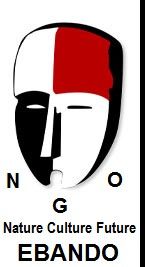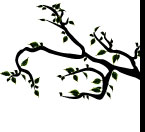 |
|
IBOGA Iboga (Tabernanthe iboga), also known as Black bugbane, is a perennial rainforest shrub and psychotropic, native to western Africa. Iboga stimulates the central nervous system when taken in small doses and induces visions in larger doses. |
 |
Quotations
Bwiti is a West Central African religion practiced by the forest-dwelling Babongo and Mitsogo people of Gabon (where it is one of the three official religions) and the Fang people of Gabon and Cameroon. Modern Bwiti is syncretistic, incorporating animism, ancestor worship and Christianity into its belief system. Bwiti use the psychotropic rootbark of the Tabernanthe iboga plant, specially cultivated for the religion, to induce a spiritual enlightenment, stabilize community and family structure, meet religious requirements and to solve problems of a spiritual and/or medical nature. The active ingredient of the root, ibogaine, has been studied scientifically. The root bark has been used for hundreds of years as part of a Bwiti coming of age ceremony and other initiation rites and acts of healing, producing complex visions and insights anticipated to be valuable to the initiate and the chapel. The root bark or its extract are taken in doses high enough to cause vomiting and ataxia as common side effects.
One of the best English language sources of information on the religion is James W. Fernandez's book, Bwiti: An Ethnography of the Religious Imagination in Africa[1]. An excellent review article is that of Goutarel, Gollnhofer and Sillans, Pharmacodynamics and Therapeutic Applications of Iboga and Ibogaine [2].
Scientific Realizations Strubelt, Iboga and Near-Death-Experience Maas, Iboga and Sudden Cardiac Death References 1. Bwiti: An Ethnography of the Religious Imagination in Africa, Princeton University Press, 1982 [1]. 2. Robert Goutarel, Otto Gollnhofer and Roger Sillans, Pharmacodynamics and Therapeutic Applications of Iboga and Ibogaine, Psychedelic Monographs and Essays, 6:70-111, 1993. [2]. · Pinchbeck, Daniel, Breaking Open the Head. 2002 Broadway Books. Part I pages 9-39. |
|
Francis Banguet
_________
Mored MBA-SIMA

